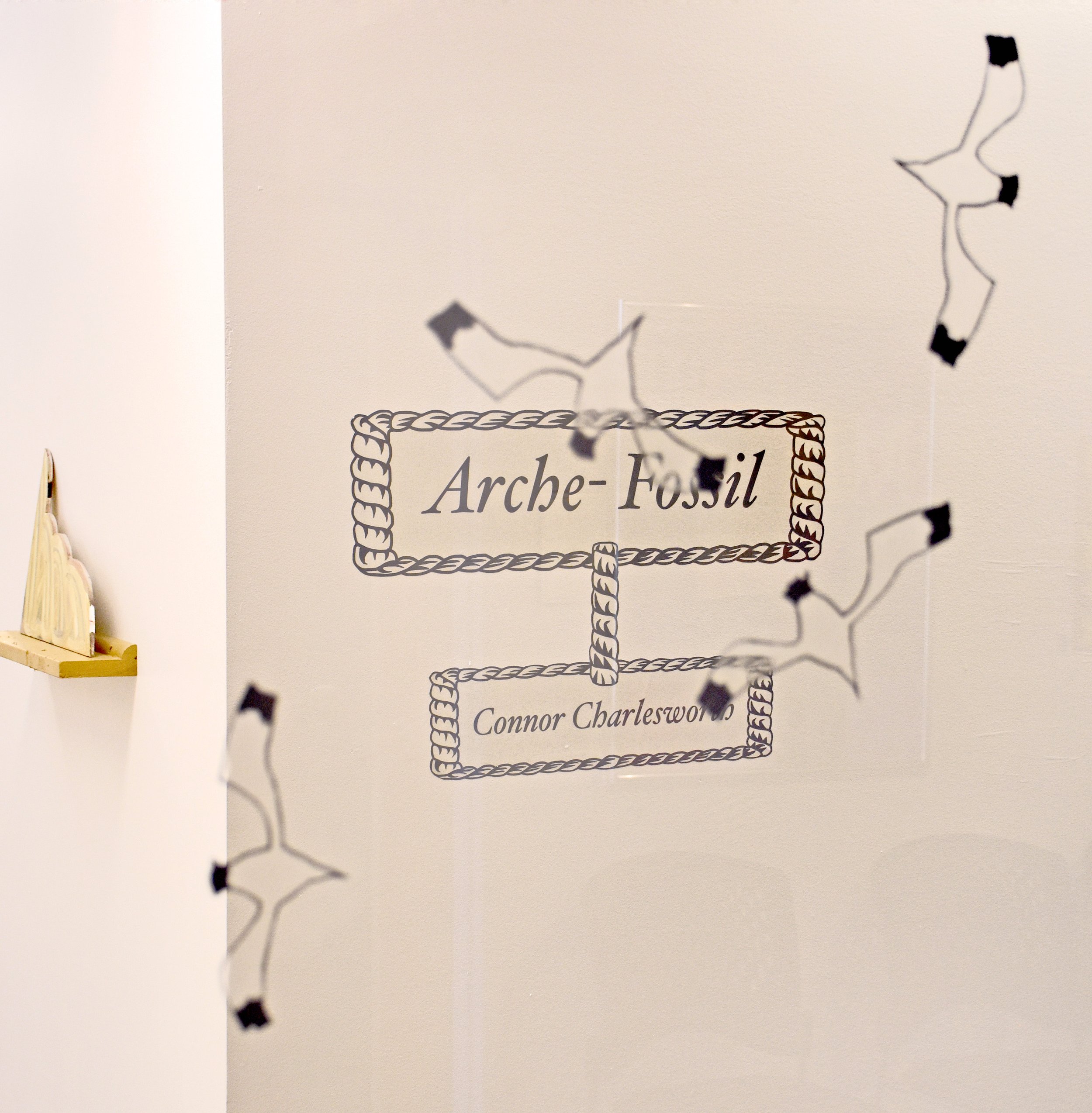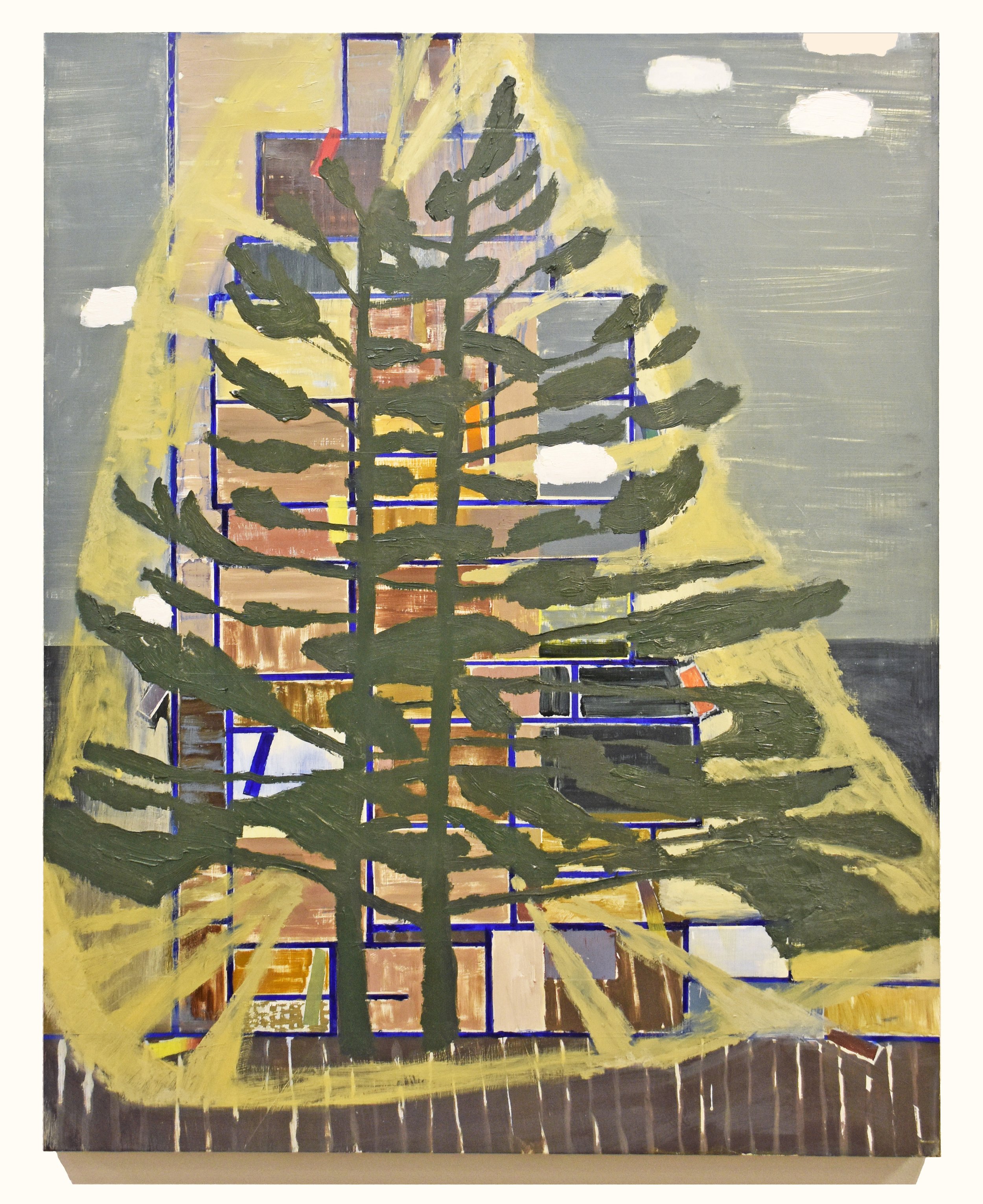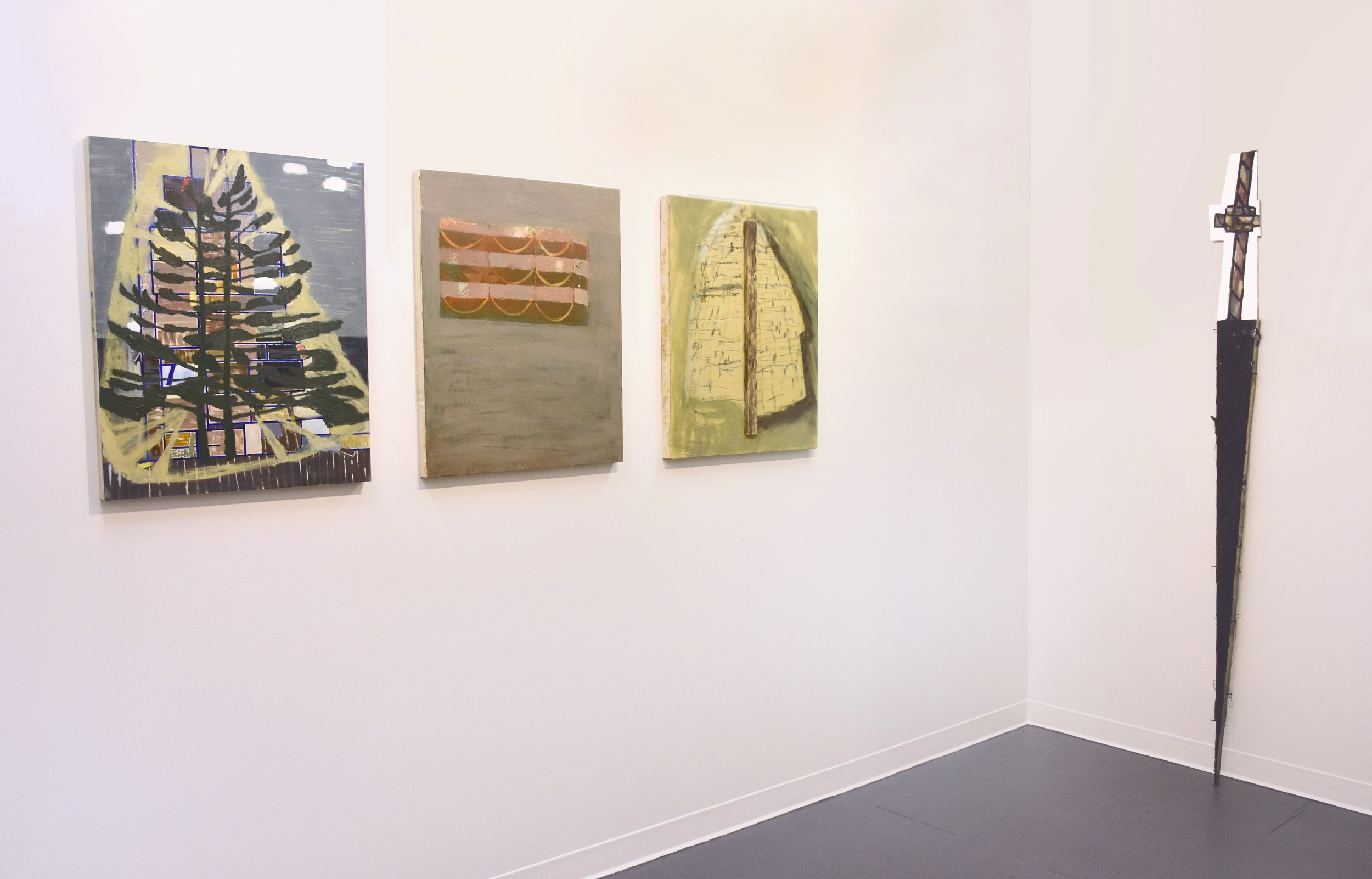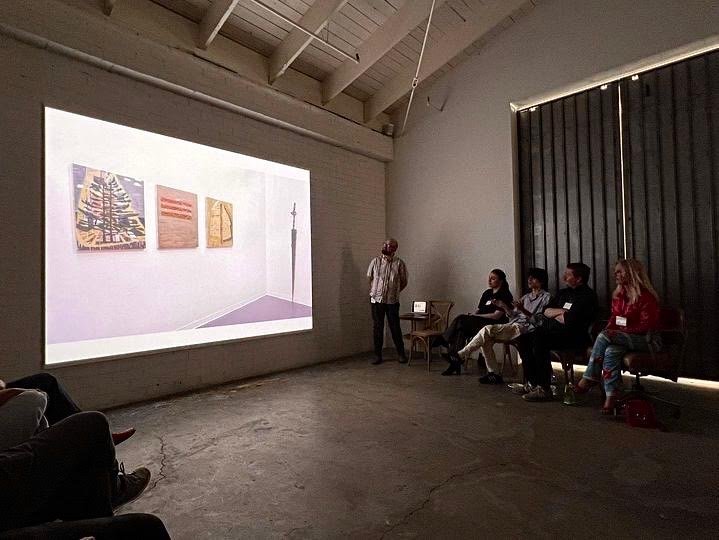ARTSCO Community Gallery
June 30th - September 1st, 2023
Coined by French philosopher Quentin Meillassoux, the concept of Arche-fossil refers to objects that indicate the existence of ancestral realities or events that are anterior to terrestrial life. In this exhibition, Charlesworth presents works that engage with second-hand experiences, such as reproductions, testimonials, digital archives, and records. These works morph from fact to fiction in an attempt to familiarize ourselves with future unknowns.
Works in progress at Charlesworth's East Kelowna studio, June 2023.
Artist Interview
Kirsteen McCulloch: How would you describe your studio practice?
Connor: It changes a lot… but I think I’m settling into some form of consistency. Not visually in the work I make, but maybe in the way I approach making work. In terms of a practice, the biggest part is showing up. When I don’t show up to the studio, I deny possibilities. Sometimes I trick myself by saying “I’ll go to the studio to do some prep or some cleaning”, and then I'll lift my head up to some half-assed painting and say “that needs work”… and there’s the entry point. For me, the best paintings straddle the line between what’s familiar and unknown. Those paintings you look at and are able to grasp something, but then it falls away. For example in this exhibition, the smaller panels on the salon wall begin with a tangible source or reference but that reference gets put through the wringer. Sometimes evidence of that initial reference will be important, sometimes not. Often I will get to a point in a painting when the work starts to tell me “this is about something else”. Those volatile moments are both uncomfortable and exhilarating. I set up my space in ways that discourage me from being overly precious with things. For example, my paint palette area is a mess. This forces me to slow down with my choices in colour… mostly because I have to search for them.
K: Are there any artists who inspire you visually or conceptually?
C: That also changes a lot! It depends on the day. It might seem trendy as a painter to say Philip Guston, but there’s a reason! His kind of gutsy pivot to figuration during the heyday of abstract expressionism in New York was admirable. Lots of folks thought it to be career suicide at the time, but those figurative works have an energy that’s so unique to him. Its always a treat standing in front of one… Likewise if I’m thinking about surface quality I have to mention Susan Rothenberg. I saw a handful of them in Los Angeles last summer, and she really packs so much love and labour into those scrubby surfaces. Marsden Hartley is someone I’ve been looking at a lot over the past year. He was an American Modernist painter from Maine. He spent a couple summers up in Nova Scotia living and working with a family of fishermen who lived about a half hour away from my relatives. That has been a really interesting narrative to follow. He went through several stages in his painting practice, but I’m most attracted to his works that employ this unapologetic chunky awkwardness. He also wrote poetry and short stories which have been very insightful.
“Log Jam, Penobscot Bay”, Marsden Hartley (American, Lewiston, Maine 1877–1943 Ellsworth, Maine), 1940–41, Oil on hardboard (masonite), 30 1/16 × 40 15/16 in. (76.4 × 104 cm), Collection of Metropolitan Museum.
More recently, artists who I’ve been looking at would be Brenda Draney, who is a contemporary Cree painter. I’ve never seen someone use blank or negative space the way she does. The painted marks and wide open blank areas feel equally charged and important. I just saw a wonderful show of Silke Otto Knapp’s in Los Angeles. Those works really moved me in ways that I am still thinking about. Something to do with how much emotion the work communicates in its restrained hand. While in LA I did a mentorship with the painter Enrique Martinez Celaya. Its my second time doing it. He is inspiring to me more so in the way he approaches painting. Don’t get me wrong, the paintings are really good. Some of his work feels a bit sentimental, but the closer I get to the canvases other things are revealed. Hes been a generous mentor and always has the next painting in mind as the root of his feedback.
K: Your work goes through many phases, how do you know when the work has come to an end?
C: I try to avoid formulas as much as I can. Each work presents its own set of challenges and requirements. So in that sense its hard to answer. I think if I pull back, I know a work is done when it has a life of its own. Sometimes that life happens quickly, other times slowly. I often find myself chasing surprise in the studio… So a lot of that has to do with the labour of rebuilding, reevaluating, listening, and pivoting. I think I get most excited about works which kind of baffle me. They begin with a concrete reference or a source, but end up as something new. Its hard to put language to.
Charlesworth presenting work from ARTSCO’s exhibition at Studio Enrique Martinez Celaya. Los Angeles, July 2023.
K: Speaking of change and pivots, the wood working/ constructed element in your work is fairly new. What convinced you to begin working in this way and will you continue to pursue it?
C: I think it was a combination of things… Part of it was practical in that I needed to slim down my inventory of stretcher bars so I reclaimed some of that lumber. Part of it was that I had acquired some new tools, but the strongest draw was that my ideas were evolving and I had to work with them. The piece “Even seagulls love the shape of roses” began with the idea of making this bird motif float or hover. The physics of it was really over my head. There are periods when the bird will get stuck and not move, but then someone will walk past and cause just enough of a draft for it to catch the wind again.
I am continuing to explore this in the studio. Some ideas lend themselves to different forms and materials. Letting ideas dictate things seems to open up doors. Its part of the metabolism that keeps things going. I am somewhat familiar with my crutches when it comes to painting on canvas, but less so with these objects. In that sense, its uncomfortable… but I know that can be a fruitful space to be.
Artist biography:
Connor Charlesworth is a visual artist and educator currently based in Kelowna on unceeded Sylix territory. He received his MFA from the University of Victoria (2018) with a specialization in painting, and his BFA from the University of British Columbia in Kelowna (2015) with a minor in Art History and Visual Culture. His current work is concerned with the space between images, objects, histories, and the process of painting. Connor has taught drawing and painting at the University of Victoria, Thompson Rivers University, and the University of British Columbia in Kelowna.











